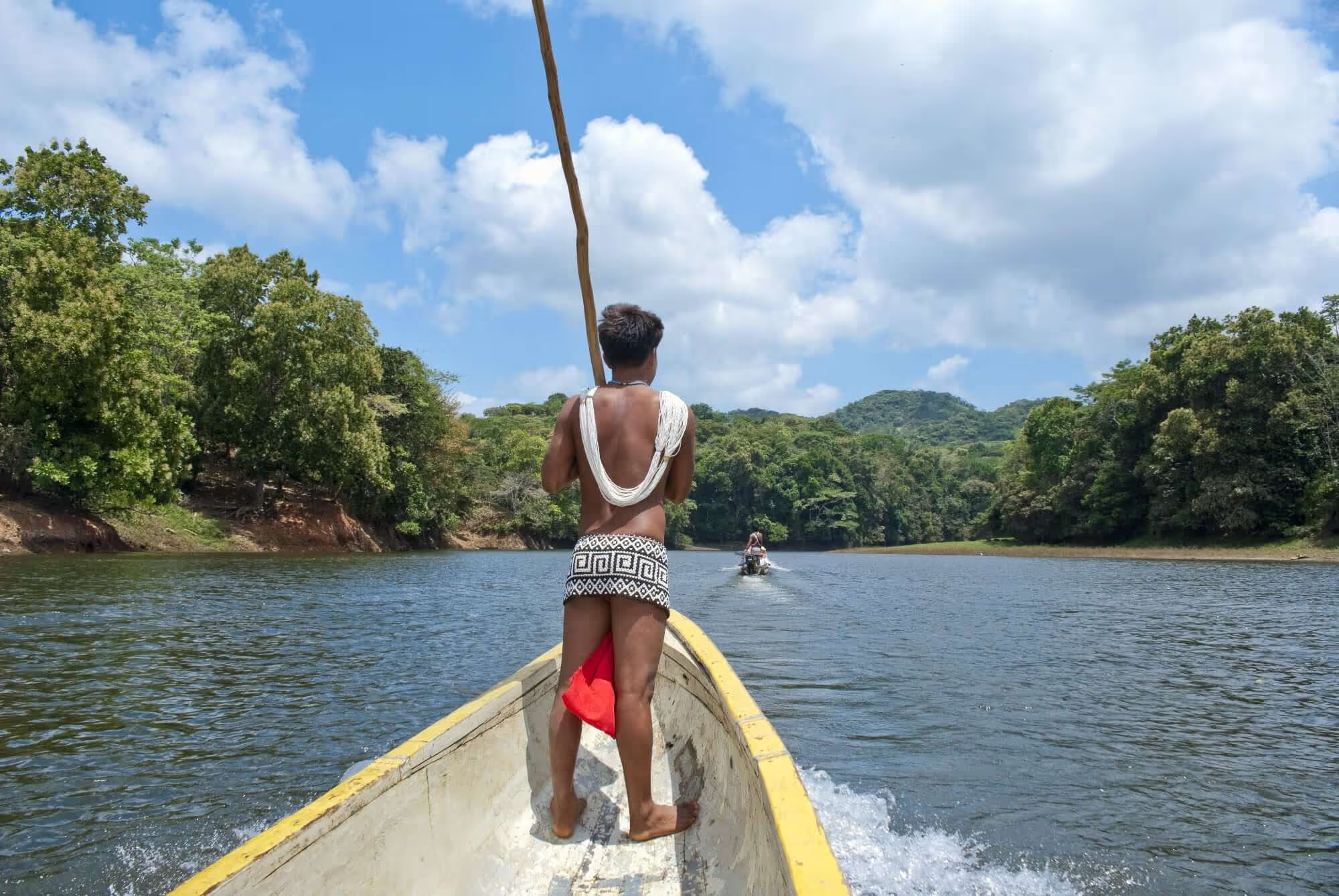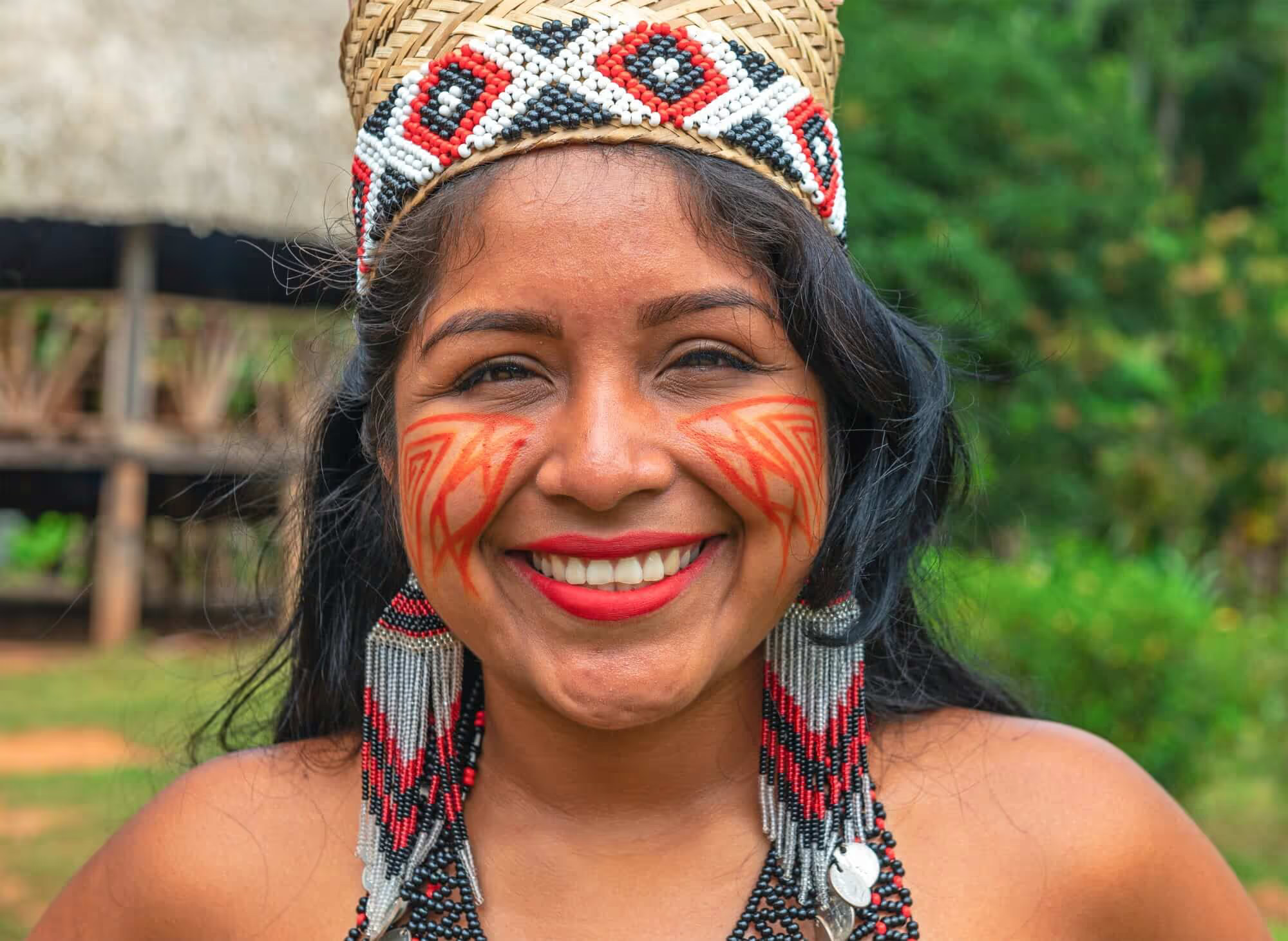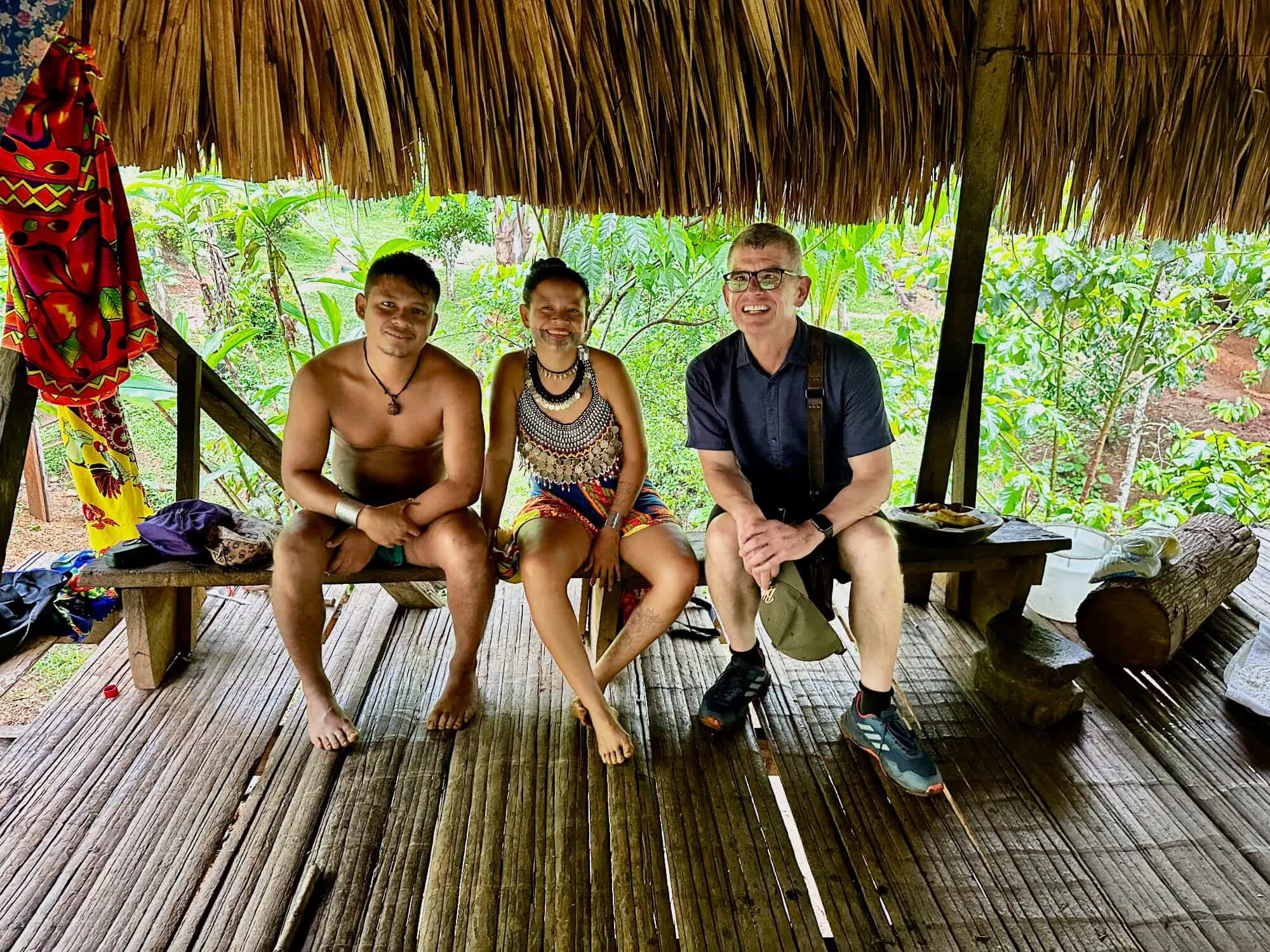

Hidden within the lush rainforests of Panama, the Emberá people have maintained a way of life rooted in ancient traditions and deep connections to nature. With a population of approximately 33,000 in Panama, many Emberá communities continue to preserve their cultural heritage, including their language, craftsmanship, and spiritual beliefs. Visiting an Emberá village offers a fascinating glimpse into a lifestyle vastly different from the bustling energy of Panama City—a journey that takes you back in time to experience something truly extraordinary.

The Emberá historically lived in small, family-based settlements along the Chagres River, where the rivers shaped every aspect of their daily life. Today, rivers remain essential to their sustenance, providing an abundance of fish and other natural resources. Their diet relies heavily on the bounty of the river, with fish and bananas forming the staples of many traditional meals.
For travelers, visiting an Emberá village is an eye-opening contrast to the urban life of Panama City. You’ll be invited to explore their unique worldview, where every living being—animal, plant, and human—is believed to possess a spirit. This belief system is central to the Emberá’s connection to their environment, and you’ll experience it firsthand through their stories, rituals, and practices.

During your visit, you’ll be welcomed with a traditional canoe ride down the Chagres River—a tranquil journey that allows you to take in the pristine beauty of the rainforest. Once at the village, you’ll witness traditional dance and music that celebrate the Emberá’s connection to their ancestors and the natural world. Don’t miss the opportunity to participate in a jagua body painting session, where you can receive temporary tattoos created using natural ink made from the jagua fruit.
You’ll also have the chance to enjoy a meal prepared by Emberá women—often a simple yet delicious combination of freshly caught fish and locally grown bananas. This culinary experience offers a taste of how the Emberá live in harmony with their environment, using what nature provides.

One of the highlights of visiting an Emberá village is discovering the exquisite craftsmanship of their handmade goods. The community is renowned for its intricate woven baskets, sculptures, and jagua-based body art. The women skillfully weave baskets from chunga (black palm) leaves, adorning them with geometric patterns and animal motifs using vibrant natural dyes. Some of these baskets are woven so tightly that they can even hold water!
Additionally, you’ll find sculptures made from tagua nuts and cocobolo wood, depicting animals from the surrounding rainforest. These pieces are not just souvenirs—they are a testament to the Emberá’s mastery of natural materials and their deep respect for the environment.

Jagua ink plays a significant role in Emberá culture, with many community members adorning their bodies with intricate designs made from the fruit’s natural ink. These tattoos, typically featuring geometric patterns or animals, last for 1-2 weeks. The ink is prepared by the women of the village, who skillfully mix the unripe jagua juice with essential oils to create the gel used for tattooing. The tattooing process is a communal activity, with bamboo sticks used to apply the designs.

To truly appreciate the Emberá way of life, it’s essential to visit one of their communities with a knowledgeable guide who has close connections to the village. The experience begins with a boat ride along the Chagres River, which transports you from the modern world into the heart of the Emberá habitat. Most of the villages are located in the Darién region, making it accessible for day trips from Panama City.
If you’re looking for a travel experience that blends culture, nature, and adventure, our Coffee & Rum by Rail in Colombia & Panama tour is the perfect choice. This unique journey through two fascinating countries includes a visit to an Emberá village, where you’ll be immersed in their traditions and way of life. From the rich flavors of Colombia’s coffee plantations to the vibrant culture of Panama, this tour offers an unforgettable exploration of Latin America’s hidden gems.

Join us on this extraordinary journey and experience the vibrant Emberá culture firsthand, while enjoying the best of both Colombia and Panama on a luxurious and adventurous rail journey. Discover more about our Coffee & Rum by Rail in Colombia & Panama tour and other incredible experiences we offer.
To fully experience the rich traditions and natural beauty of Panama, our Coffee & Rum by Rail in Colombia & Panama tour offers an exclusive visit to an Emberá village. This unforgettable journey blends cultural immersion with the comforts of luxurious travel, allowing you to connect with the Emberá people, discover their traditions, and experience their deep connection to nature. From the serene boat ride along the Chagres River to the vibrant music, dance, and stunning handicrafts of the Emberá community, this tour invites you to step into a world untouched by time. Discover the best of both Colombia and Panama on this extraordinary rail adventure, where every stop is a celebration of Latin America’s hidden gems.